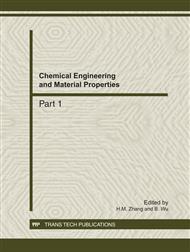p.116
p.121
p.126
p.130
p.134
p.138
p.143
p.147
p.151
Effect of Sewage Load Shock on Channel Disposal by Bio-Film Process
Abstract:
The paper studied the removal rate of COD under the impact of an instantly big flow of wastewater, and restoring capacity of bio-film after the impact in order to provide data to simulate disorderly discharged sewage in tidal rivers. At 2h after rising tide, the concentration of COD in the dosing pool was 187mg/L and the removal rate of COD was 33.2%. The removal rate of COD before the impact was similar to that after the impact, which indicated that bio-film had the adaptive ability. At 2h after ebb tide, the removal rate of COD was 30.7% after the impact in the dosing pool. The removal rate of COD was 32.0% before the impact in the dosing pool. Compared to the removal rate of COD before the impact, the removal rate of COD after the impact slightly decreased and the reason was that multiple enzyme stimulant had the positive effect on restoring capacity of bio-film.
Info:
Periodical:
Pages:
134-137
Citation:
Online since:
December 2011
Authors:
Keywords:
Price:
Сopyright:
© 2012 Trans Tech Publications Ltd. All Rights Reserved
Share:
Citation:


